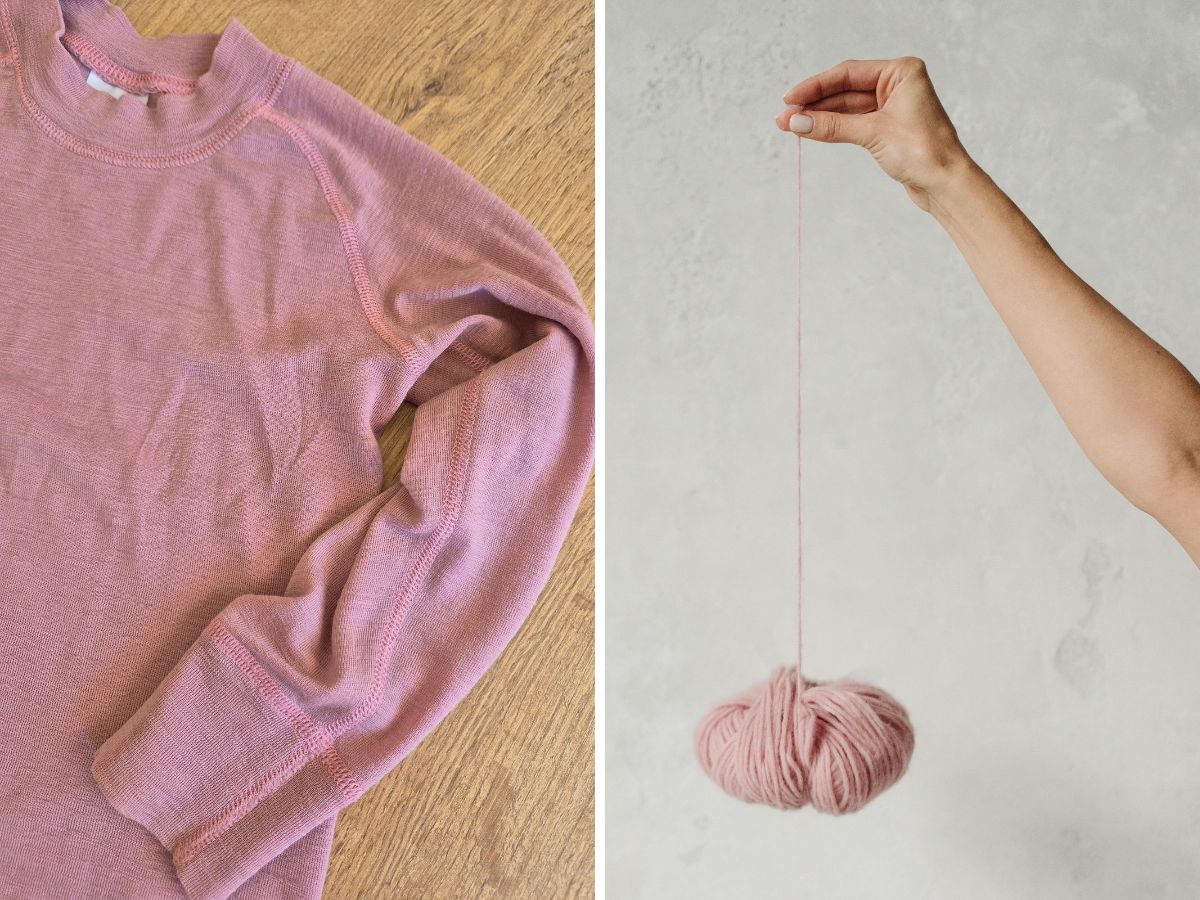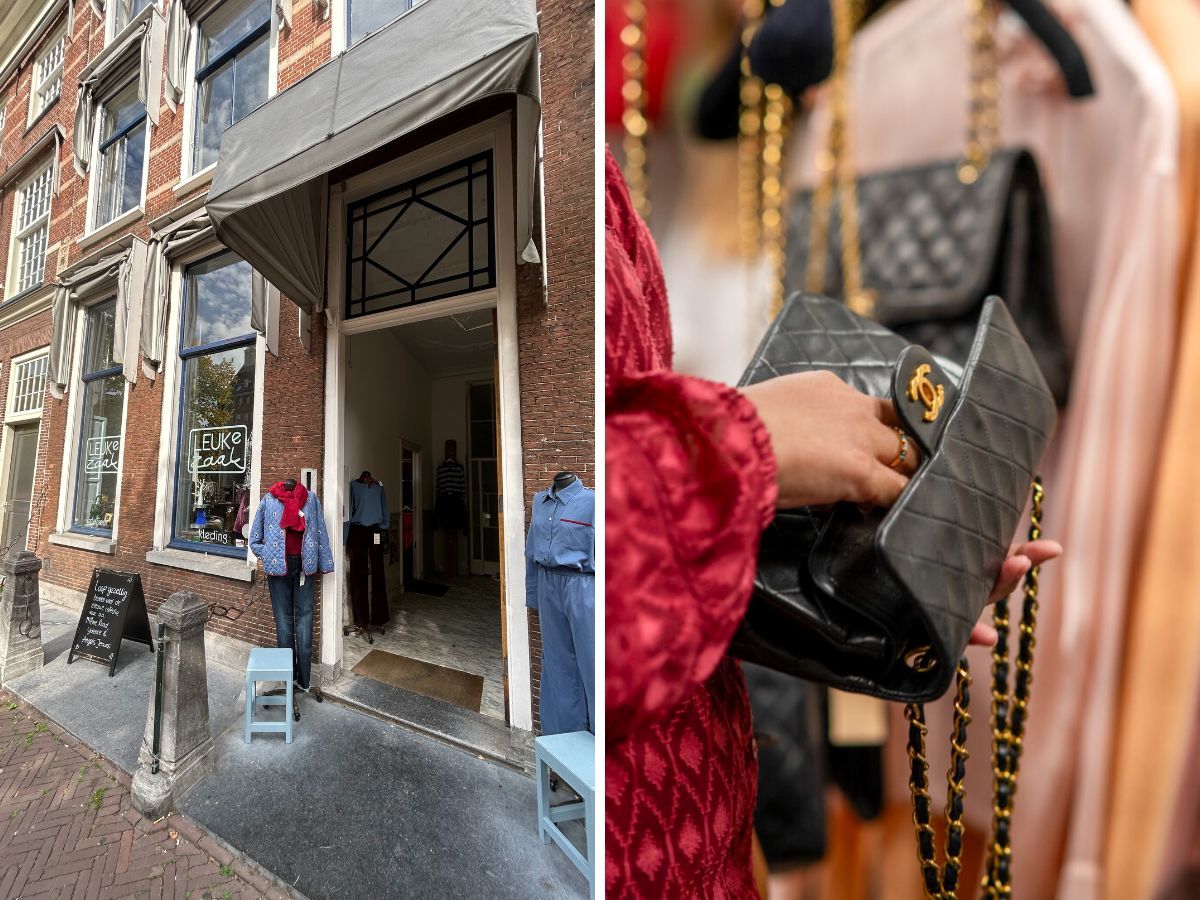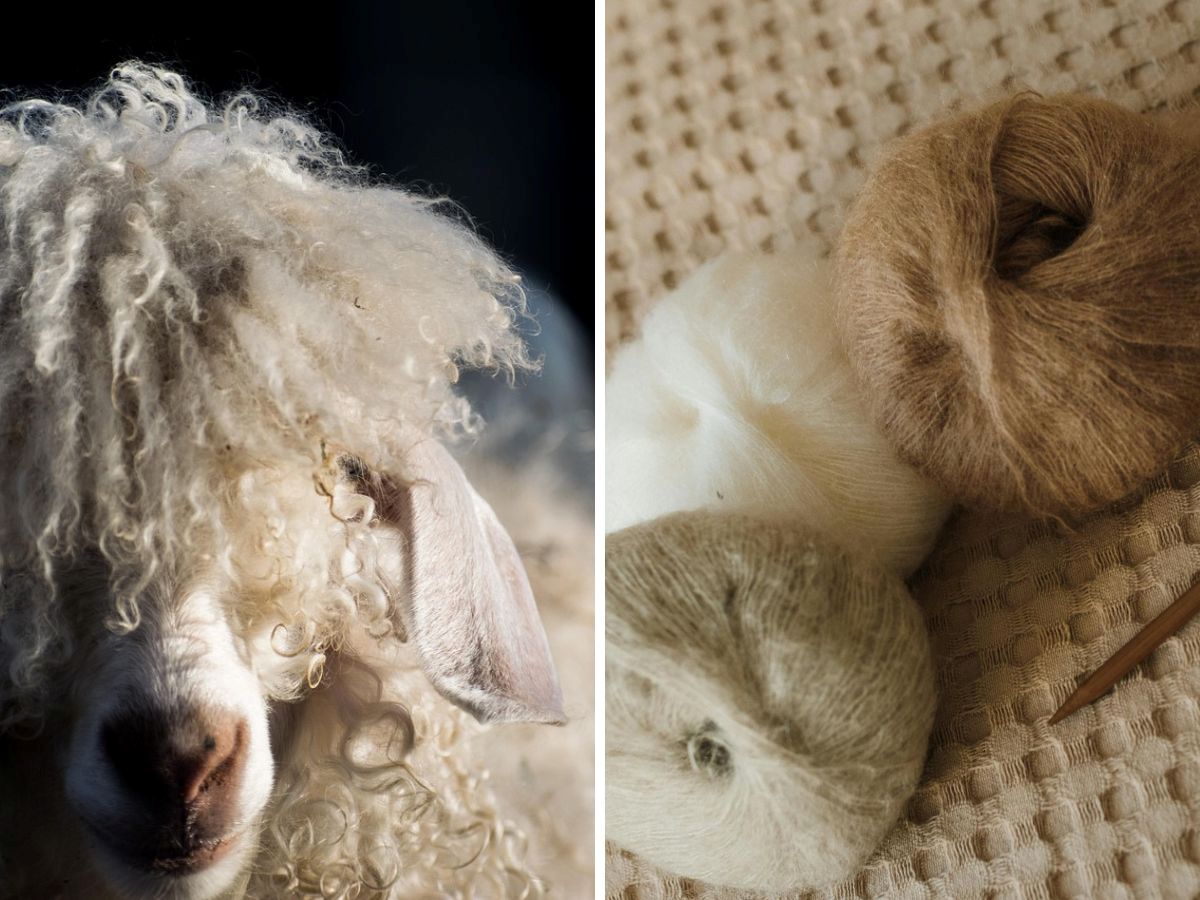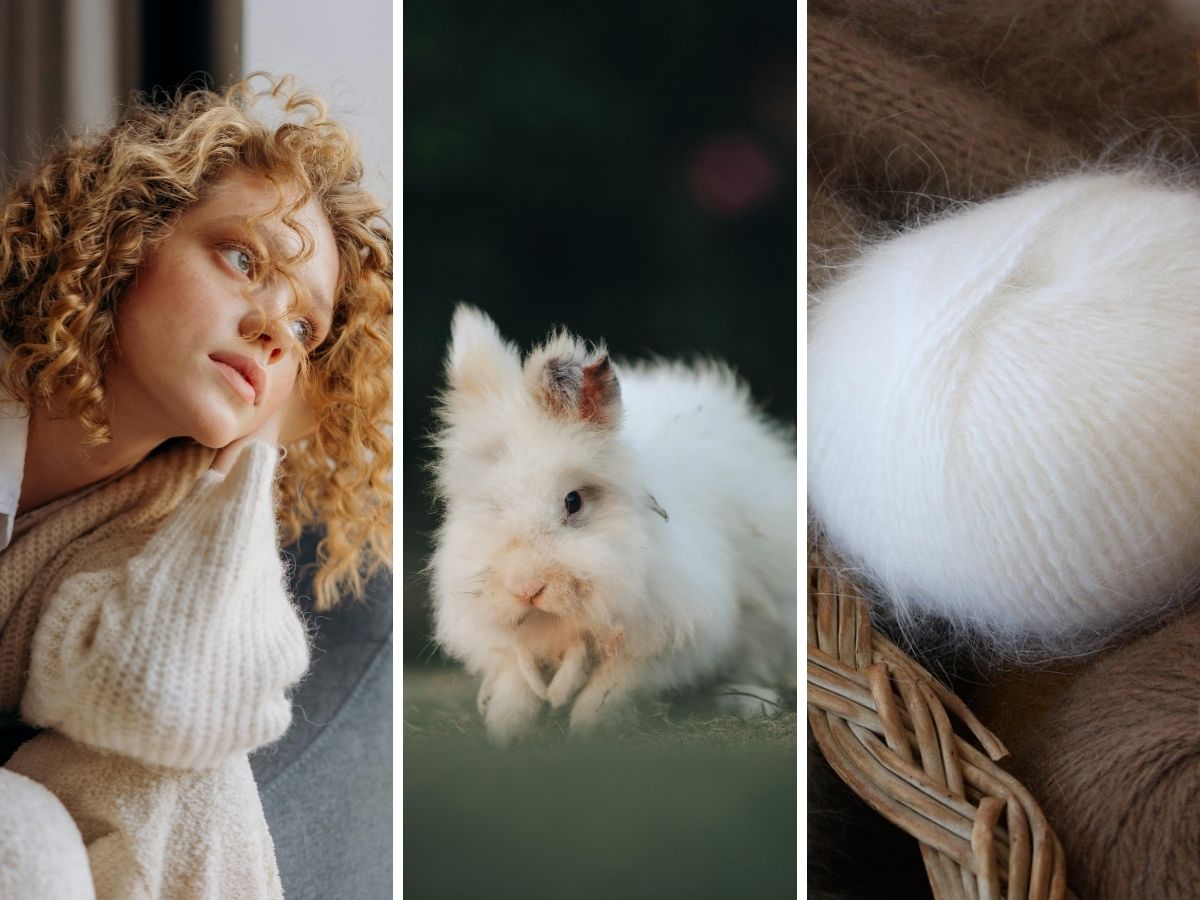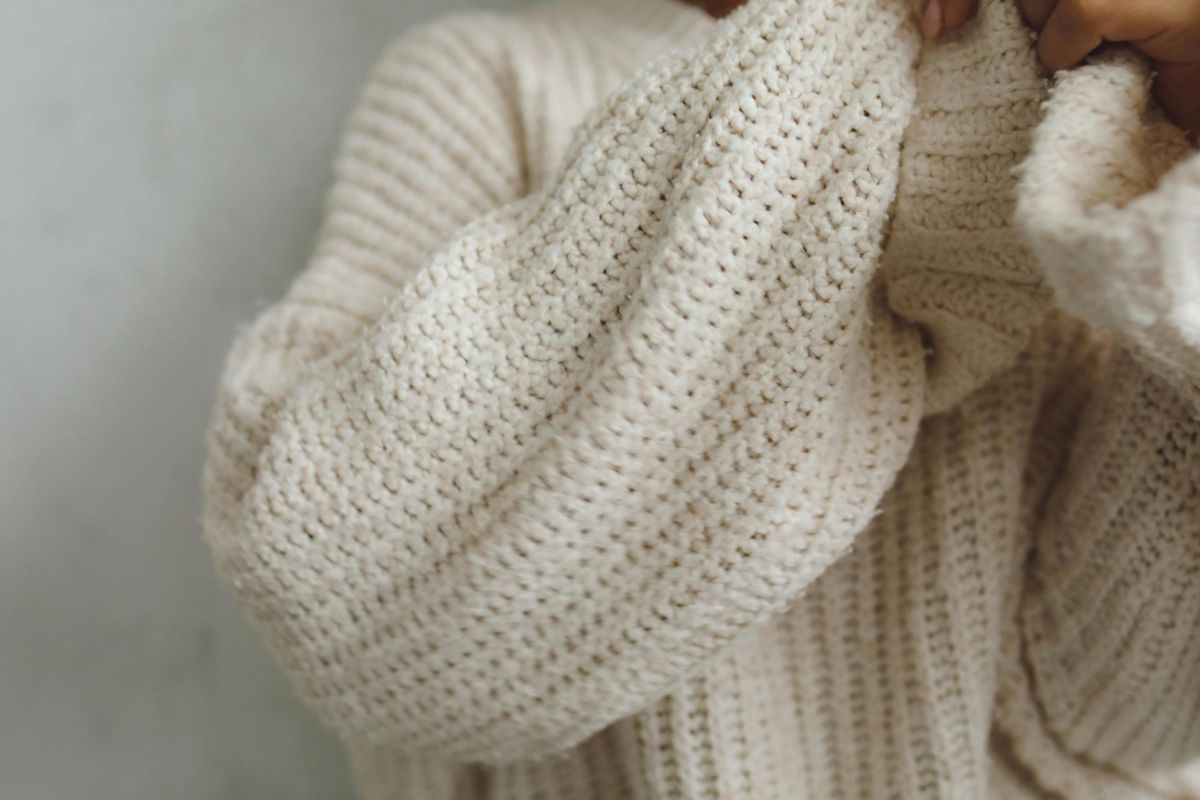Wool that you can machine wash at 40 degrees, just like the rest of your clothes? That's convenient! This makes it even easier to choose natural material instead of synthetic. Top, we thought. Until we found out that some wool clothes are treated with chlorine and given a layer of plastic so that they can be washed at higher temperatures and are less itchy. This method is also called superwash and does not have to be indicated on the label. So it may still say 100% wool on the garment. But how do you know if the wool is really natural?
Wool: a natural material sometimes with a plastic layer
Wool is a natural material with fine properties. It may not be the most climate- and animal-friendly clothing material. Those sheep fart a lot, you can read more about that here. And yet we thought that wool is in most cases more environmentally friendly than synthetic materials like polyester or acrylic, because it is not made from petroleum and no microplastics come off during washing. Especially if you buy wool second-hand, it seemed like a good sustainable choice to us. Until we found out that there is such a thing as superwash: a method where a thin layer of plastic is applied over the wool so that it feels finer and can be washed at higher temperatures. Ai, that sounds a lot less natural. We wanted to know more about that.
Does untreated wool exist?
A woollen garment is always treated in some way. After a sheep is sheared, a lot of steps are needed before that fine woollen jumper is in your closet. The wool has to be washed, spun, knitted or woven, and often dyed. These steps usually have little impact on wool's fine properties. Wool naturally contains lanolin: a fatty substance produced by the sheep's sebaceous glands that makes wool water- and dirt-resistant. Therefore, you don't need to wash wool as often. In addition, wool - like our hair - has scales. These scales open when it is warm and close when it is cold. This makes wool temperature regulating. The scales also help repel dirt and moisture. But precisely because of these scales, wool can shrink in the wash and sometimes itch. To counteract this, superwash is just around the corner.
What exactly is superwash?
Superwash has been around since the 1970s, the time when synthetic clothing materials such as polyester were making their rise and people got used to washing everything in the washing machine. The superwash treatment of wool involves two main steps. First, the wool is given a bath of chlorine to break down the outer layer of the fibre - the scales. Then a layer of polymer (often Hercosett) is applied to form a new, smooth outer layer. This cripples the scales, making the wool less likely to shrink or itch. That new layer also makes the wool softer. This sounds convenient, but superwash also has drawbacks.
The disadvantages of superwash
The superwash method uses a lot of water and creates toxic waste. As superwash involves applying a plastic layer over the wool, it is obvious that microplastics are released during washing. The International Wool Textile Organisation claims, however - based on this study - that this is not the case. But: in that experiment, the wool was first washed in a manner similar to washing in a washing machine about 20 times. So it is possible that some of the plastic layer had already worn off before the test. So whether microplastics are released from the wool after treatment with superwash is not entirely clear, but what is certain is that the production process is harmful to the environment. Moreover, the wool loses not only its ‘negative’ properties, but also the positive ones: the temperature is less well regulated and the fibre is less dirt- and water-repellent.


A woollen shirt that can be washed at 40 degrees and tumble-dried is likely to have been treated with superwash.
How do you recognise superwash?
Manufacturers are not obliged to state on the label of clothing that the wool has been treated with superwash: it is therefore still allowed to simply say ‘100% wool’ on the label. Well, how can you tell if your wool is coated with plastic? Fortunately, there are labels you can look out for. Organic wool may not have been treated with superwash. Labels such as GOTS or IVN superwash is not allowed. Also, more sustainable brands often state on their website that they do not use superwash. Find our list of more sustainable wool brands here. Does the label say the wool can be machine-washed or even tumble-dried at 40 degrees? Then chances are it has been treated with superwash. True wool lovers will often also be able to feel it: a garment treated with superwash feels different from pure wool. It is smoother, shinier and more like synthetic material.
More sustainable alternatives to superwash
Fortunately, technology is not standing still, and methods have now been developed that try to achieve the same effect as superwash, but are less harmful to the environment. For instance, there are treatments with enzymes, biopolymers or electrons that mimic the superwash effect. These techniques are kinder to the environment as well as to the wool itself, as they preserve more natural properties. However, they are often less effective, so the wool still needs to be washed carefully.
Need woollens? Beware of superwash
Wool is a special material, mainly thanks to the scales that allow wool to regulate temperature and repel dirt and water. But those scales also have drawbacks: they can shrink and sometimes itch on the skin. Superwash seems like a handy solution to counteract this, but by neutralising the scales, wool loses some of its good properties. The lanolin, which provides water- and dirt-repellence, also disappears from the wool. Then you might as well opt for a plant-based material such as organic cotton or Tencel. You can read more about clothing materials in this article. Would you still like to make use of the fine properties of wool? Then choose wool without superwash, such as organic wool. That way, you enjoy all the benefits of wool without sacrificing our planet.
Sources: Natur-el, Bergstrand, Ecotex, Making Stories, History of Clothing, Science Direct. Photo credits: main image on the left and blue wool shirt: Kirsten Schoner, main image on the right: Pavel Danilyuk (Pexels), basket of wool: Surene Palvie (Pexels).

